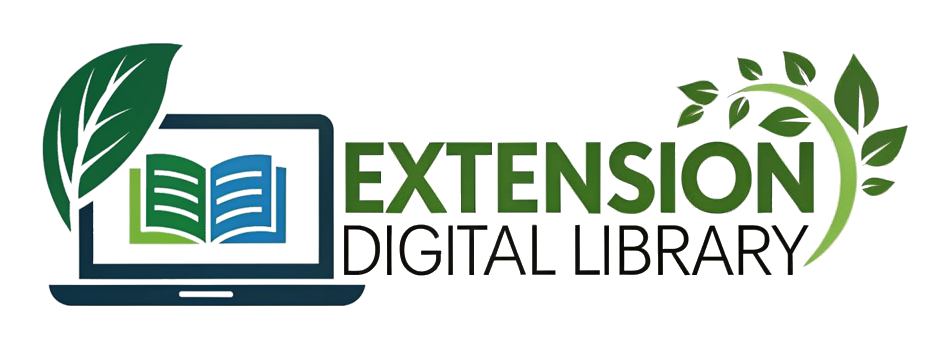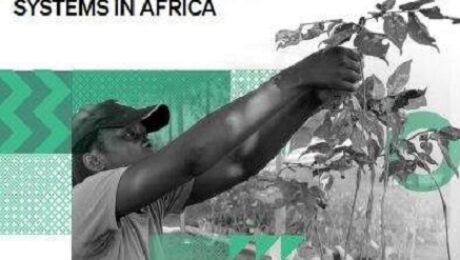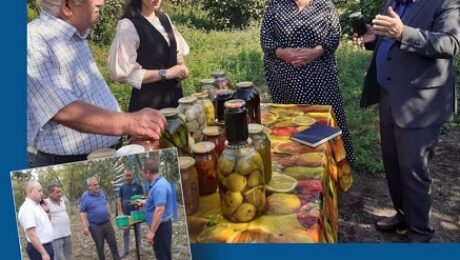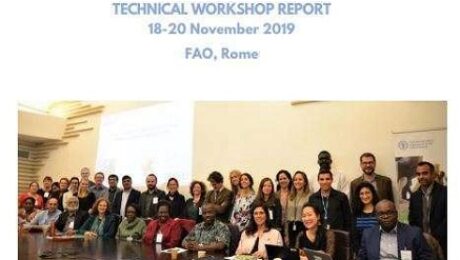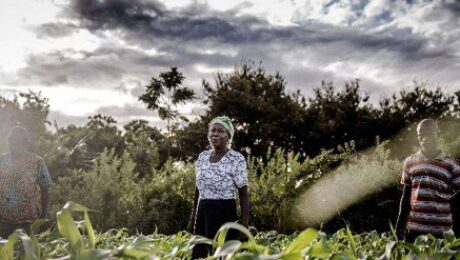Sustainable and resilient Indigenous Peoples’ Food Systems for improved nutrition
Disruptions in Indigenous Peoples’ food systems (IPFS) have caused profound changes in their dietary patterns. Loss of food biodiversity and increased consumption of processed foods lead to malnutrition, with indigenous women disproportionately affected.
This toolbox provides guidelines on how to design and assess food biodiversity and dietary diversity projects with local communities, with the aim of improving the diets and nutrition of Indigenous Peoples. It focuses on local food biodiversity, leveraging Indigenous Peoples’ knowledge, practices, languages, culture, and environment.
- Published in GUIDE/TOOLS/MANUALS
Research Series 71: Urbanizing food systems: exploring opportunities for rural transformation
This paper shows that while anticipated increases in food demand by 2050 can largely be met regionally, potential yield increases or diversification will not contribute automatically to inclusive rural transformation. Instead, urbanization may potentially increase rural inequality and poverty. Smallholder farmers located close to expanding cities risk losing their land to urbanization, while people living in rural areas far from growing urban food markets who lack access to inputs, information, and markets are at risk of losing out.
For all rural food system actors to profit from growing urban markets, the patterns of urbanization, the quality of rural-urban linkages, and the functionality of secondary towns are crucial. Physical and communicative proximity to urban markets means better access to finance, inputs, information, and services. Furthermore, off-farm employment opportunities can arise in the developing value chains. To realise the opportunities, this paper identifies a range of social, physical, spatial, economic and institutional conditions that enable inclusive rural transformation.
- Published in GUIDE/TOOLS/MANUALS
Mapping of territorial markets
Malnutrition in all its forms (undernutrition, micronutrient deficiency, overweight and obesity) is a major global challenge, and improving nutrition is a key priority for global development, as recognized in the UN Decade of Action on Nutrition (2016–2025) and the 2030 Agenda for Sustainable Development. In this context, ensuring availability, physical accessibility and affordability of healthy and nutritious food at territorial level is crucial to ensure the achievement of the Sustainable Development Goals (SDGs). In many developing countries, territorial markets are key retail outlets for fruits and vegetables, but also for animal source foods and staple foods. Besides the relevance, data concerning the availability of the different food groups and characteristics of food retailers and consumers in territorial markets are seldom considered in national data collection systems. This publication presents a structured methodology and a series of guidelines for mapping territorial markets, as developed by the Food and Agriculture Organization of the United Nations (FAO), along with representatives of producer organizations and academics.
- Published in GUIDE/TOOLS/MANUALS
Investment guidelines for youth in agrifood systems in Africa
The Investment guidelines for youth in agrifood systems in Africa, developed jointly by FAO and the African Union Commission (AUC) through a multi-stakeholder and participatory process, highlight the importance of youth as change agents and key stakeholders contributing to sustainable agrifood systems. The guidelines aim to accelerate investments in and by youth in agrifood systems by providing practical guidance – including tools and examples – to design, develop, implement, monitor and evaluate youth-focused and youth-sensitive investment programmes and to engage youth fully as partners in the entire process.
The guidelines were prepared with the support of the AUC and FAO Technical Cooperation Programme (TCP) “Partnership to Support AU’s Strategies on Social Protection, School Feeding and Rural Youth Employment” of the FAO Regional Office for Africa (RAF) and from the Investment Centre (CFI). This publication is part of the Investment Toolkits series under the FAO Investment Centre’s Knowledge for Investment (K4I) programme.
- Published in GUIDE/TOOLS/MANUALS
Agricultural trade in the Global – An overview of trends in performance, vulnerabilities, and policy frameworks
South-South Cooperation (SSC) is increasingly recognized as an effective instrument for catalyzing economic development by fostering the exchange of innovation and good practices, and expanding market opportunities across countries with a similar level of development and shared development objectives, such as those reflected in the Sustainable Development Goals (SDGs). Key to this economic cooperation are trade and investment relationships among South countries. The importance of South countries in global agrifood markets and trade has been increasing over the last two decades, with growth in their participation, as both exporters and importers, having outpaced that of North countries. Agricultural productivity growth has fueled expansion in the production of some products, while population growth and urbanization, rapid economic growth and increasing per capita incomes have contributed to growing demand for diverse food products.
- Published in GUIDE/TOOLS/MANUALS
UNDFF Regional Action Plan for strengthening family farming in South Asia 2021–2028
The Regional Action Plan for strengthening family farming in South Asia has been elaborated through a participatory and multi-stakeholder approach in the framework of the UN Decade of Family Farming and in close collaboration with SAARC Agriculture Center, the Asia Farmer Association for Sustainable Rural Development and the International Cooperative Alliance – Asia Pacific. Consultations with farmers’ organizations, cooperatives and other relevant stakeholders at country level first helped identifying and prioritizing key interventions for the region along the seven pillars of the Global Action Plan. These initial inputs then contributed to the overall drafting of the contextualized pillars led by recognized experts from the region. The draft pillars were presented during a first regional virtual consultation on UN Decade of Family Farming: Formulating Strategies and Action Plan to Strengthen Smallholder Family Farmers in South Asia held on the 5–6 November 2020. A follow up regional consultation meeting on review and finalization of the Regional Action Plan for strengthening family farming in South Asia was then organized on 29 July 2021. The objective was to present, discuss and validate the draft Regional Action Plan for strengthening family farming in South Asia. This Regional Action Plan aims at facilitating and accelerating the process of developing national action plans through inclusive multi-stakeholder processes, not only putting family farmers at the centre but recognizing them as critical partners.
- Published in GUIDE/TOOLS/MANUALS
Guide on Training of Facilitators of Multi-actor Agricultural Innovation Platform
This guide is a guideline tool, rather than a textbook for training MAIPs facilitators. Facilitators should keep in mind that MAIPs advocate learning by doing, through practice. They should conduct MAIPs by referring to the training activities in this book instead of copying. Although the authors have tried their best to make this guide applicable to agricultural production and social development in various places, it is difficult to cover all the content. Therefore, MAIPs facilitators using this book are encouraged to give full play to creativity and develop training activities and methods sensitive to local characteristics and value chains.
- Published in GUIDE/TOOLS/MANUALS
Assessment Metrics for Agricultural Innovation Systems (AIS) and Extension and Advisory Services (EAS)
Innovations in agriculture emerge from collective action, which accelerates the pace and enhances their impact on the agrifood sector and farming communities. Multi-actor engagement requires a systems approach to upscale innovations. Innovation outcomes such as increased agricultural productivity, sustainable management of natural resources, improved livelihoods, and food and nutrition security are largely dependent on the effectiveness and performance of agricultural innovation systems (AIS) and the real impact those brought to the farming community.
While an AIS perspective has been widely adopted by international development organizations and put in use by many countries, most of these countries have a long way to go towards having wellfunctioning AIS in which all subsystems, such as research, education and extension, and actors, both public and private, interact and collaborate effectively. There is therefore a need for an assessment of AIS and a proper diagnosis of the interrelations among different actors, institutions, policy and socio-economic environment at the country level – something which was recognized during the first International Symposium on Agricultural Innovation for Family Farmers, which took place on 21-23 November 2018 at FAO headquarters1 . The AIS assessment should generate evidence-based information for improved decision-making, and support the formulation of policy, by collecting quantitative and qualitative data and information on key features of AIS. Without adequate assessment of the properties and performance of an AIS and its sub-systems, such as the agricultural extension and advisory services (EAS), it is difficult for policy-makers and practitioners to design approaches, promote policies and investments that foster greater innovation in agriculture2 . Guidelines and methodologies are pertinent to assess the properties and performance of AIS and EAS. Furthermore, as countries face difficulties and capacity constraints to elaborate those methodologies and valorize the diagnosis’ findings by themselves, it becomes increasingly evident that a tailored global tool to assess agricultural innovation and support systems around it is thus needed.
- Published in GUIDE/TOOLS/MANUALS
Documenting and scaling up knowledge and innovations – Guidelines and templates
Assessing or understanding the agriculture innovation system (AIS) is an essential step to better understand the needs, new skills and functions needed by the actors and the system. To accelerate the uptake of innovation and progress towards eradicating poverty, there is an urgent need for well-coordinated, demand-driven, and market-oriented information, knowledge, technologies and services.
This document includes a set of information, templates and resources that aim to assist agricultural Innovation systems actors, stakeholders, producers, farmers to develop and share impactful stories. It guides actors and organizations across all sectors in the innovation system to collect and document case studies, success stories, good practices and lessons learned from the project initiatives, trainings and others actions. It highlights scaling-up elements so that other actors can replicate these innovations with a view to scale-up, particularly the stakeholders and actors involved in the DeSira project, through knowledge exchange and sharing.
- Published in GUIDE/TOOLS/MANUALS
Module 6: Seed storage
This toolkit – made available in English, French and Spanish – will be promoted as practical guidance to assist in the implementation of the national seed strategies. It will provide a number of practical capacity building tools for essential stages of the seed value chain and targeted primarily at seed sector practitioners who will participate in special training workshops to acquire pertinent technical knowledge and will be expected in return to create a multiplier effect through further follow-up FFS trainings down to the level of seed traders and farmers. In doing so, the toolkit will be used as guidance for conducting country-led workshops and other training activities aimed at strengthening quality seed delivery systems and seed regulatory mechanisms in selected countries. The development of capacity in the production of high quality seeds, the seed replacement rates, true seed cost and realistic seed pricing mechanisms as well as the role of different stakeholders are of critical importance in the process of the formulation of national seed policies, which is one of the core areas of FAO’s delivery at the national level.
- Published in GUIDE/TOOLS/MANUALS
